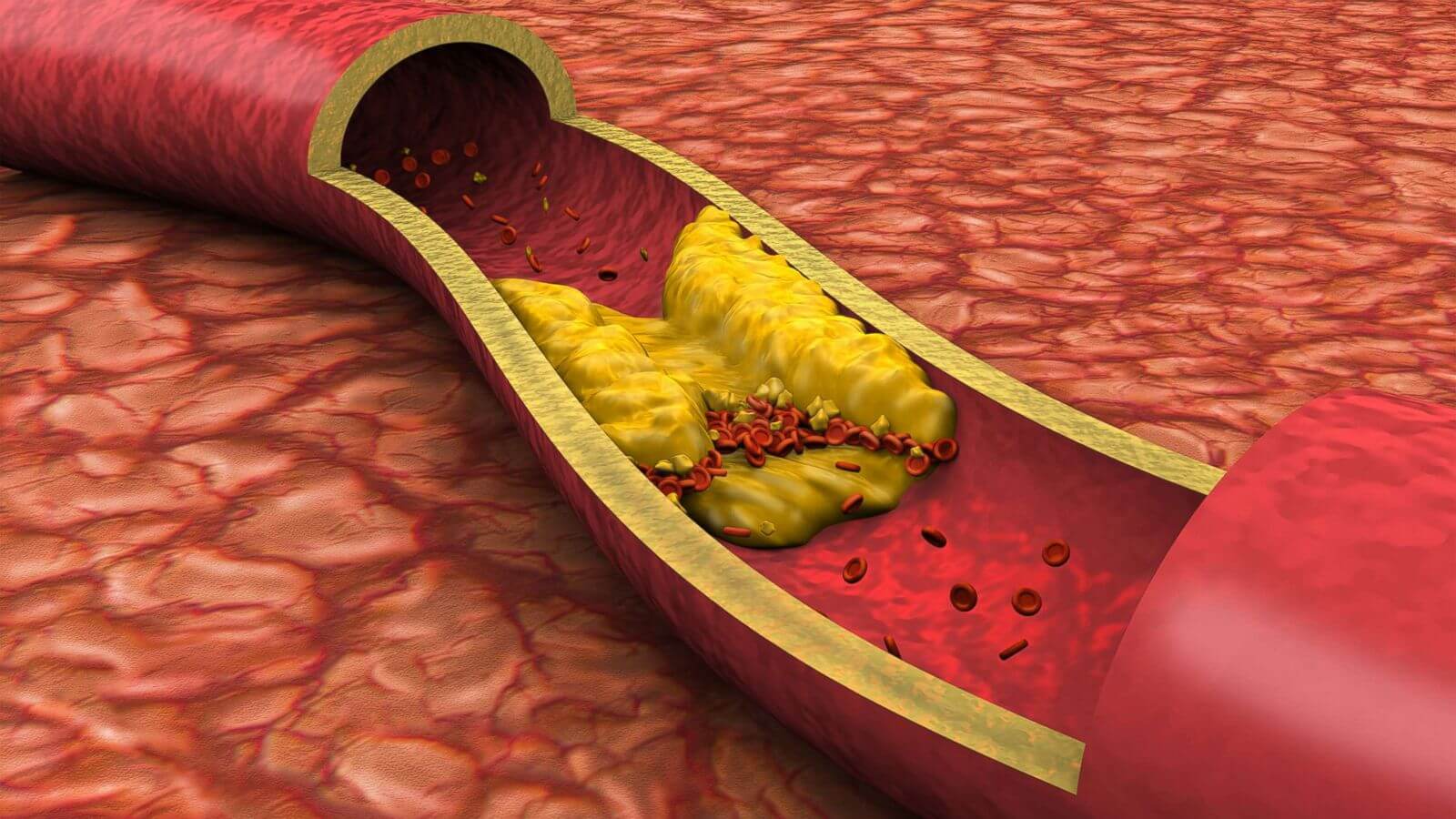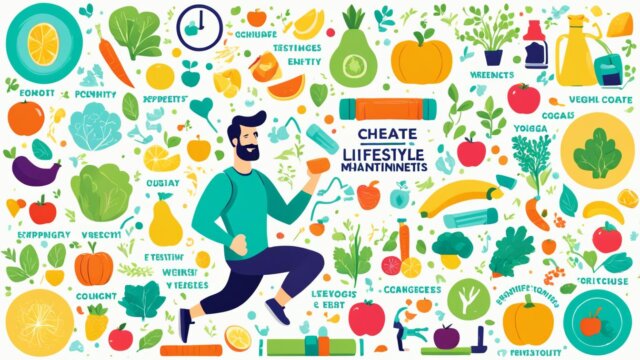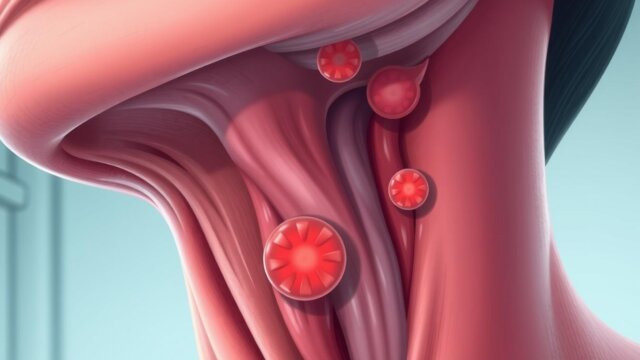FTC disclaimer: This post may contains affiliate links and we will be compensated if you click on a link and make a purchase.
We generally encounter and battle with Cholesterol when there are underlying heart disease symptoms, and we want to have a healthy cholesterol level.
Here we will explore what cholesterol is and why we increase one level and reduce the other; what part does it contribute to your body?
What is Cholesterol and What is a Healthy Cholesterol Level?
Cholesterol possesses a waxy texture and is an essential component present in our cells and travels through our bloodstream.
Cholesterol mainly divided into two types: HDL (so-called “Good Cholesterol”) and LDL (so-called “Bad Cholesterol)
Good cholesterol (HDL) aid in building cell membranes and various hormones; the bad cholesterol (LDL) in increased levels will clog the arteries and lead to a heart attack in due course.
A minimum of 40 mg/dL of HDL and a maximum of 200mg/dL of LDL are healthy cholesterol levels.
Any changes from these numbers, we would need to take immediate action to bring it back to a healthy cholesterol level.
Total cholesterol level
Total cholesterol levels measure the total amount of cholesterol in your blood.
It includes both low-density lipoprotein (LDL) cholesterol and high-density lipoprotein (HDL) cholesterol.
If your total cholesterol level is abnormal, then you need to consult your doctor for further reference.
Non-HDL cholesterol level
Non-HDL cholesterol is one of the prominent factors that taken into consideration while calculating cholesterol level. It is primarily the difference between total cholesterol and HDL cholesterol.
Non-HDL = Total cholesterol – HDL Cholesterol
If your Non-HDL cholesterol is high, you are more prone to developing atherosclerosis or narrowing arteries.
Further, if it remains untreated, there is an increased risk of developing heart disease, chest pain (angina), heart attack, or stroke.
Cholesterol Levels by age and gender
What is a Normal Cholesterol level by age and gender?
Normal levels don’t represent a single number. However, they should ideally fall somewhere in a range of values considered ‘normal.’
The following normal ranges have been established:
- LDL – 100 mg/dL to 129 mg/dL
- HDL – greater than 40 mg/dL
- Total Cholesterol – less than 200 mg/dL
- Triglycerides – 100 mg/dL to 150 mg/dL.
These ranges change with age. For instance, a 25-year-old with an LDL of 125 mg/dL is totally different from a 75-year-old healthy individual whose LDL is above 160 mg/dL.
The 25-year-old is at risk for cardiovascular disease, especially if a genetic predisposition exists.
If you have any risk factors, have your cholesterol measured annually or more often if recommended by your doctor.
Healthy cholesterol level, by age and sex
Demographic | Total cholesterol | Non-HDL | LDL | HDL |
|---|---|---|---|---|
Age 19 or younger | Less than 170 | Less than 120 | Less than 100 | More than 45 |
Men ages 20 or older | 125 to 200 | Less than 130 | Less than 100 | More than 40 |
Women age 20 or older | 125 to 200 | Less than 130 | Less than 100 | More than 50 |
Normal and abnormal lipid value (Lipid Profile Test)
A lipid profile test or lipid panel test is a type of blood test which determines the abnormality in the cholesterol and triglycerides.
A lipid profile test is used to measure the risk associated with heart disease, stroke, and other conditions.
Below you will find a chart of normal and abnormal lipid value in childhood (of age below 20)
Types | Normal Level (mg/dL) | Borderline Level (mg/dL) | Abnormal Level (mg/dL) |
|---|---|---|---|
Total cholesterol | Less than 170 | Between 170-199 | greater than and equal to 200 |
Triglycerides (0-9 years) | Less than 75 | Between 75-99 | greater than and equal to 100 |
Triglycerides (10-19 years) | Less than 90 | Between 90-129 | greater than and equal to 130 |
HDL Cholesterol | More than 45 | Between 40-45 | Less than and equal to 40 |
LDL Cholesterol | Less than 110 | Between 110-129 | greater than and equal to 130 |
Non-HDL Cholesterol | Less than 120 | Between 120-144 | greater than and equal to 145 |
Below you will find a chart of normal and abnormal lipid value in men or women (above age 20)
Types | Normal Level (mg/dL) | Borderline Level (mg/dL) | Abnormal Level (mg/dL) |
|---|---|---|---|
Total cholesterol (TL) | Less than 200 | Between 200-239 | greater than and equal to 239 |
Triglycerides | Less than 150 (Ideal is less than 100) | Between 150-199 | greater than and equal to 199 |
HDL Cholesterol (HDL-C) | more than 60 | Between 60-40 (for men) and Between 60-50 (for women) | Less than and equal to 40 |
LDL Cholesterol (LDL-C) | Less than 130 | Between 130-159 | greater than and equal to 159 |
Non-HDL Cholesterol (Non-HDL-C) | Less than 130 | Between 130-159 | greater than and equal to 159 |
TG to HDL ratio | Less than 3 | Between 3.1 – 3.8 | greater than and equal to 3.8 |
How often should you get a cholesterol test?
The most frequently asked question is that how often I should have a cholesterol test.
The frequency of cholesterol tests depends on your age, risk factors associated with your health, and the family history you belong to.
For teens or children having age 19 or younger:
- The first test for people of age below 19 should get tested between ages 9 to 11.
- After having the first test, you can continue after 5 years.
- If your child has a family history of high blood cholesterol, heart attack, or stroke, it will start at the age of 2 after proper consultation with a doctor.
For men or women having age 20 or older
- A healthy younger adult should have the test every 5 years.
- Men between ages 45 to 65 and women between ages 55 to 65 should have a cholesterol test every 1 or 2 years.
Monitoring HDL and LDL Levels
Talk to your doctors about regularly monitoring HDL and LDL cholesterol levels.
These levels can give your physician some valuable information to help determine your risk for cardiovascular disease.
An effective means of reducing cholesterol is through exercise, a balanced diet, relaxation, and, where necessary, medication.
Coronary heart disease patients are typically on a program to reduce LDL to a level below 100 mg/dL of blood and raise HDL levels above 35 mg/dL of blood.
High LDL Cholesterol Levels Effects
Deposits of cholesterol can bring about atherosclerosis. As a result, there would be thickening and hardening of the arteries caused by plaque build-up.
Atherosclerosis is often linked with heart palpitations, coronary heart disease, congestive heart failure, and stroke.
Heart palpitations
Heart palpitations are heart-pumping irregularities that include rapid beating or skipped beats. If arteries are partially blocked, the cardiac muscle will contract faster and harder to move the same blood volume.
But, healthy individuals may occasionally experience palpitations; recurrent heart palpitations can be life-threatening.
Congestive heart failure
Congestive heart failure is a condition where it decreases the efficiency and ability of the heart pumping. As a result, there would be a decreased volume of blood being moved forward with each heartbeat.
Many contributing factors are linked with congestive heart failure.
Some common contributors to congestive heart failure include stress, atherosclerosis, high blood pressure, and any medical condition. It further results in heart valve and heart wall damage.
In some cases, high cholesterol doesn’t respond well enough to lifestyle changes. This is when cholesterol-lowering drugs become necessary.
You can go to the High Cholesterol Treatment Options to learn about your treatment options.
Congestive heart failure affects the exchange of nutrients and oxygen between body tissues. Moreover, poor blood flow alters the body’s fluid dynamics, which further causes fluid buildup in the lungs and swelling of the legs.
Over time, if high cholesterol is left untreated, the condition can adversely affect nearly every organ in the body.
Coronary heart disease
Coronary heart disease (also referred to as coronary artery disease) is the number one reason for many death of both men and women in the United States, as per research.
In coronary heart disease, atherosclerosis developed in coronary arteries (the vessels that supply blood to the heart) decreases oxygen and blood supply to cardiac muscle.
Later, it causes angina, and often resulting in irreversible damage to cardiac tissues and, if left untreated, a fatal heart attack.
Stroke
A stroke is a ‘brain attack‘ brought on by a blockage of blood flow to the brain.
Very often, this blockage is caused by a piece of dislodged plaque or a loosened blood clot. It develops in an artery wall and is later lodged in a brain artery narrowed by plaque build-up. This is called an embolic stroke.
The rupture of a blood vessel in the brain, or aneurysm, is another common cause of stroke.
Understanding Lipoproteins, Plaque, Triglycerides, and Homocysteine
Lipoproteins
Cholesterol is an essential lipid (fat) that, rather than floating freely in the blood, is transported in the blood as part of a lipoprotein molecule.
Two types of lipoproteins carry cholesterol: one beneficial and one detrimental.
The harmful lipoprotein, LDL, deposits cholesterol in the arteries as plaque, narrowing and hardening the vessels, making it more difficult for the heart to pump blood through them.
The beneficial lipoprotein, HDL, has the ability to pick up cholesterol that has been deposited in the arteries as plaque.
HDL ‘dissolves‘ the deposit and transports it to the liver, removed from the bloodstream. Increasing HDL levels helps lower the concentration of ‘bad’ LDL in the blood, thus reducing the chance of build-up and heart disease.
The Problem with Plaque
As the layer of plaque lining the arteries thickens, the heart has to use more energy and contract with more force to pump the same volume of blood through the body.
At the same time, if partly obstructed, the coronary arteries cannot supply the heart muscle with enough nutrients and oxygen for the heart to do its work.
This can lead to irreversible damage to the heart muscle and heart attack.
When the plaque deposits are unstable, then they usually rupture the blood vessel. As a result, it will release cholesterol into the bloodstream all at once and can trigger clotting in small coronary arteries.
Further, when the artery is completely blocked, blood flow stops, and a heart attack occurs. Elevating HDL levels can help remove the LDL that forms ‘stable’ and ‘unstable’ deposits.
As a result, the deposit of plaque will have effects on narrowing arterial passageways.
Triglycerides and Homocysteine
Triglycerides and homocysteine are substances that can cause heart problems if they’re present in the bloodstream in high concentrations.
In fact, they can actually help in the formation of plaque deposits.
Recent research suggests that high triglycerides in the blood can cause heart problems.
Research evidence also indicates that homocysteine can interact with blood proteins and cells lining the arteries to bring hemorrhaging and blood clotting.
What is Plaque?
Excess LDL cholesterol clings to arterial walls as it is transported through the system.
The fat migrates into special cells called “foam cells.” It will form connective fibers around the fatty layer, causing it to harden.
Over time, the fibrous layer thickens, hardens, and starts narrowing the arterial pathway. Moreover, when calcium deposits form a crust, the plaque becomes brittle and is more likely to rupture.
What Causes High LDL Cholesterol Number: Heredity or Diet?
Several factors may contribute to increased cholesterol in the blood and subsequent heart disease. These include hereditary factors, diet, and lack of exercise.
The major contributor of cholesterol is from fried food, processed food, simple carbohydrates, processed meat, and sugar.
Moreover, the body itself manufactures cholesterol, so eating a high-fat diet derived from natural sources will never cause high cholesterol.
Diet high in saturated fat
A diet high in saturated fat can increase body weight and contribute to a high body fat percentage.
When the percentage exceeds 30 percent, the risk of coronary heart disease increases significantly. Excessive weight tends to push up the number of lipids in the blood.
No physical activity
If your lifestyle includes little physical activity, your heart disease risk will increase due to arterial plaque deposits, increased body fat, and weight gain.
These increase the risk of angina, heart attack, stroke, and other cardiovascular problems.
Genetic
Genetics plays one of the major roles in determining the speed at which cholesterol is formed and removed from the bloodstream.
Because of this, genetic can result in high LDL cholesterol and premature coronary heart disease.
Menopause
As people age, LDL rises. Menopause often results in higher LDL levels and lower HDL levels.
While hormone therapy has been used successfully in postmenopausal women to stabilize them, a rise in triglycerides tends to be a side effect.
Alcohol beverages
Alcoholic beverages and excessive drinking can be risk factors for heart disease, high blood pressure, and damage to the heart wall. It can also increase triglyceride production.
Long-term stress
Long-term stress will change your eating habits and may promote high LDL—people often gravitate towards unhealthy ‘comfort foods’ during stressful times.
You are at risk of getting high LDL cholesterol if you . . .
- eat a high-fat diet
- do not exercise
- have a high percentage of body fat
- addicted to smoking
- are a man over 45 or a woman over 55
- have crossed menopause
- are genetically predisposed.
Cholesterol Levels and the Cardiovascular system
Your heart is essentially a pump whose function can be affected by several factors, including total blood volume, blood vessels’ elasticity, a plaque build-up in arteries, hormones, and nerve stimulation.
Also, we look after how changes in these factors can result in cardiovascular disease or malfunction.
Low-density lipoprotein (LDL) and high-density lipoprotein (HDL) play a crucial role in cardiovascular health, cholesterol transportation, and plaque formation.
It identifies normal cholesterol levels and discusses the risks of high LDL levels and the benefits of lowering LDL and raising HDL.
Maintaining Heart Health
If you are suffering from high cholesterol and/or triglycerides, you have to set objectives and goals for the short-term and long-term diet plan.
Your objective will help you lower saturated fat and introduce a regular exercise program to reduce body fat. If needed, medications can help you reach your objectives.
Your long-term goals will help you lower cholesterol and triglyceride levels. Further, it reduces excess body weight.
Moreover, you have to maintain them for life through dietary intake and regular exercise, if possible, without medication.
For heart disease patients, maintaining a healthy heart is a prime concern for your lifetime.
Your targets should always to lower than the established normal range.
This usually requires dedication and a comprehensive approach. It includes regular aerobic exercise, a strict diet, and a medication regimen.
Additionally, you have to work with your doctor, a dietician, or a nutritionist. Moreover, you also need a physical trainer to help develop and stick with your healthy heart program for life.
A healthy heart program should include the following:
- eating a low-fat diet
- exercising regularly
- reducing stress
- reaching and maintaining an appropriate weight
- reducing body fat
- adhering to prescribed medications, if necessary.
Why should you lower your LDL levels?
Lowering Cholesterol and Triglycerides
The ultimate benefit of lowering triglycerides and LDL and raising HDL to be average or better than average levels for the population is a decreased risk of developing coronary heart disease or other serious cardiovascular conditions.
Lowering cholesterol and triglyceride levels means less risk of plaque formation. It will lead to fewer arterial blockages and a lower incidence of hemorrhaging and blood clotting.
Less plaque formation will result in a reduction of atherosclerosis and also lower the incidences of angina, heart attack, and stroke.
As a result, it will increase longevity for coronary heart disease patients, which means a smaller chance of heart attack.
More than the Heart
The benefits don’t only apply to the cardiovascular system, but a healthy cardiovascular system is necessary for all body systems to benefit from lowering triglycerides and LDL.
Healthy circulation is necessary for providing nutrients and oxygen to all of the body’s cells and organs and for metabolic waste product removal.
This is especially important for organs whose function requires adequate blood flow, such as the heart, brain, kidneys, and sex organs.
Good circulation is required for healthy sexual functioning.
Stress, caffeine and other stimulants, nicotine, and certain drugs can cause constriction of the blood vessels, decreasing circulation to the sex organs.
Plaque buildup decreases the inside diameter of the arteries, reducing circulation and increasing blood pressure.
High blood pressure (hypertension) can, over time, damage blood vessels, including those supplying the sex organs.
Lowering cholesterol levels can positively affect your sex life by decreasing blood pressure and improving circulation.
Building a Strategy to lower cholesterol and triglycerides
Several approaches to lowering cholesterol and triglycerides are possible.
However, the most effective and sustainable strategy is a comprehensive one that addresses all areas of health.
This strategy is based on a change in diet and eating habits and an aerobic exercise program centered around personal interests.
While your diet and exercise program will specifically target lowering triglycerides and cholesterol, the additional benefits to your overall health and well-being are worth the effort.
The Risks of Living with Elevated Cholesterol
High triglycerides are often linked with high LDL, one of the causes of stroke, heart attack, atherosclerosis, and coronary artery disease.
Elevated LDL also increases the risk of high blood pressure and other cardiovascular health problems.
Research has shown a direct link between coronary artery disease and high LDL and a direct link with high triglycerides.
If you are a smoker, have diabetes, are physically inactive, or are greatly overweight, having high LDL and/or high triglycerides may carry additional health risks.
Associated Risk Factors
Smokers put themselves in double jeopardy if they also have elevated LDL.
The nicotine from the tobacco constricts blood vessels that are already narrowed from plaque deposits and atherosclerosis.
Smoking increases the likelihood of coronary thrombosis (blood clot) and heart attack.
Diabetes increases your risk of developing heart disease. Cardiovascular disease, including stroke, is at least twice as common in diabetics, and about two-thirds of people with diabetes have elevated blood pressure.
If you do not have diabetes but have elevated cholesterol, high blood pressure, excessive body weight, or a sedentary lifestyle, you are at risk for developing Type 2 diabetes.
Inactivity combined with elevated LDL adds to the risk of developing coronary artery disease. A lack of aerobic exercise tends to lead to weight gain, increased triglycerides, and elevated blood pressure.
Clearly, an elevated level of cholesterol will increase the risk of developing cardiovascular disease.
The greater your risk factors, the more significant the need for you to lower your LDL.
Replace inactive lifestyle with regular aerobic exercise. Start eating a healthy diet and foods and, if overweight is an issue, then decrease excess body fat. Additionally, stop smoking and alcohol consumption.
If you have diabetes, maintain your blood sugar level and carbohydrate intake.
Additional Risks
Two additional risk factors are age and family history of heart disease.
You might be genetically inclined to cardiovascular disease if family members in previous generations had atherosclerosis, heart attacks, or high LDL before the age of 55 in men and 65 in women.
If you are a woman of at least 50 years of age or a man of at least 40 years, have your cholesterol levels measured. Postmenopausal women are also at an increased risk.
The economic risks are always there when you are living with elevated cholesterol.
The open-heart surgery costs and afterlife, along with post-operative drugs and medical care, could mean economic hardship. However, it is much easier to prevent cardiovascular disease than live with its effects.
Outlook
To maintain a healthy cholesterol level is to have a regular check-up whereby the ideal way to know your cholesterol level is by doing a blood test.
Obesity often comes with high LDL levels; hence weight has to be watched though cholesterol is not measured by weight. But it does not mean that someone who is not obese or even underweight will have good cholesterol levels.
Food labels have to be read, and be sure that you don’t eat the latter, as LDL is also present in trans and saturated fats.
Foods such as eggs, milk, butter, and poultry all contain cholesterol, and since you cannot remove all the food that has cholesterol from your diet but can control the portions.
Consult your physician or dietician if you are unsure of what to eat when to obtain a custom-made diet plan with the correct portion of cholesterol.








